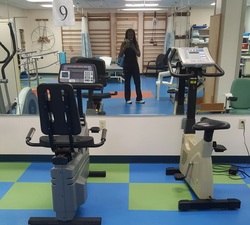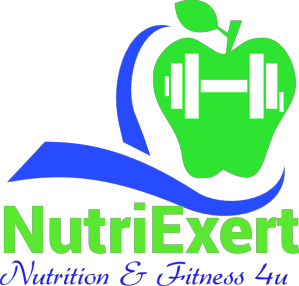
Most persons are conscious about their health and may desire to start an exercise programme to assist with weight loss. You may sign up for the gym but when you get there you become overwhelmed with the different equipment and how to actually start using them. It is important to have a little understanding about the equipment you use for exercise so that you can get much more out of your efforts. In genereal there are four technologies of training equipment, Let us review them and look at the advantages and disadvantages.
The four technologies of training equipment are:
- Constant resistant devices
- Variable resistance devices
- Accommodating resistance devices
- Static resistance devices
Constant resistance devices (free weights) are devices where the weights never change. This means the weight/resistance does not increase or decrease during the course of exercise. For example a dumbbell or barbell have the same weight no matter how many times you lift them.
Advantages
Free weights tend to incorporate more muscles in the execution of the moves. Because they are free of constraints offered by cables or machines, the muscles can contract through a more complete ROM with assistance from other stabilizing muscle groups. In essence, a seated overhead press with dumbbells, although targeting the shoulder muscles, will solicit help from smaller muscle group, thus, working more muscles at one time. Free weights are also more functional, meaning they simulate more daily or athletic movements.
In sports training free-weight exercises tend to more closely match the movement patterns you're likely to need for specific sports. The benefits of training athletes on Olympic lifts is that the athletes learn to feel the effort required for maximum power and speed of the lift, allowing them to take this increased power into a range of sporting movements. Rapid pulling (e.g. power clean) and pushing movements (e.g. push press, jerk) are transferrable to athletic performance.
In bodybuilding and muscle mass free weights incorporate the stabilizing muscles that enable you to perform the movements you choose to make and may be more effective in producing overall muscular strength and power gains.
Disadvantages
Free weights have two main limiting features;
- They do not correct for changes in musculoskeletal leverage that occur during an exercise movement.
- They do not correct for reduced force output stemming from fatigue.
For the weight lifter you must learn to balance the weight while exerting force. This can be difficult — and potentially dangerous — if you are lifting weights overhead.
For sports trainers who want to target specific muscles for their sport, the isolation of specific muscles can be difficult. To target the muscle you want, precise technique must be used.
Advantages and disadvantages of using variable resistant devices in the general population, sports training and bodybuilding for muscle mass
Variable resistance devices are strength training equipment that has specially-designed features, which alter the external weight load throughout the range of motion of the exercise. In fitness, variable resistance refers to a type of weightlifting in which the amount of resistance that the weight applies will vary throughout the exercise's motion. Variable resistance machines use circular cams, lever arms and seat adjustments to regulate the amount of resistance throughout the exercise.
Advantages
When using variable resistance, the resistance is higher where your muscles are stronger, and lighter where your muscles are weaker. This allows you to work with a weight that matches your strength levels throughout the movement. This feature benefits all trainers – the general population, sports training and training for increase muscle mass. Many individuals prefer the variable resistance due to the ease of use and ability to monitor increases in strength.
Disadvantages
Disadvantages of variable resistance machines include expense and limitations of the machine. Many different exercises can be performed with dumbbells and they can be purchased for home use. Variable resistance machines are expensive with a limit of one exercise per machine.
Another major disadvantage is that the movement is not natural and therefore causes confusion in the brain centres that interpret the force and movement pattern. The result is that muscular gains in strength and size are slower in coming and are limited in their final potential, this can ultimately affect all aspects of training.
Advantages and disadvantages of using accommodating resistant devices in the general population, sports training and bodybuilding for muscle mass
Accommodating resistance machinery is designed to allow you to exert maximum resistance throughout the full range of movement in each of your exercises. I so doing you are able to maximize the amount of exercise stress your muscles receive.
Advantages
An advantage to this type of technology is that ballistic movement is eliminated. It allows for overload to be exerted to the fullest with quality. It eliminates a lot of danger with overextended joints, and injuries related to pulled muscles, and this benefits all levels of training, but especially new trainees.
Disadvantages
As with variable resistant devices, accommodating resistance movements are unnatural. It seems the brain is not adapted to accepting the unnaturalness of controlled speed. Machines on a whole tend to be bulky, expensive and inflexible (only specific exercises can be performed). Most machines are designed for a ‘standard’ individual, so if you don’t fall within the design specifications, you cannot use the machine effectively and this affects the entire population, sports trainers and those seeking to build muscle mass.
Advantages and disadvantages of using static resistant devices in the general population, sports training and bodybuilding for muscle mass
Contracting your muscles without movement is called static contraction. The term isometric exercise was coined to describe this form of stress. To accomplish this, one would push or pull on an immovable apparatus. The advantage is that it makes you stronger, it does build muscle if done frequently enough and forcefully enough and if you are looking to tone muscles and burn fat, then static exercise can also help to accomplish this. Bodybuilders, and general workout buffs are often trying to increase their lifting capability in bench presses, military presses, and squats, so functional isometrics would be a good change to incorporate into their workout program.
Disadvantages
When you push or pull on an immovable apparatus, you only get stronger in that position. This type of exercises is not recommended for those with heart problems or high blood pressure.
Conclusion
All four technologies of training equipment have their advantages and disadvantages in terms of cost, versatility, muscle recruitment and portability. For all-around body strength and the development of speed and power, free weights are superior. However, machines are great for beginners, the young and old, for injury rehabilitation and for targeting specific muscles.
The best solution in training general populations, in sports and in body building is to use all technologies of training wisely, and in combination with each other.
Reference
Fitness: The Complete Guide - Official Text for ISSA's Certified Trainer Course

 RSS Feed
RSS Feed